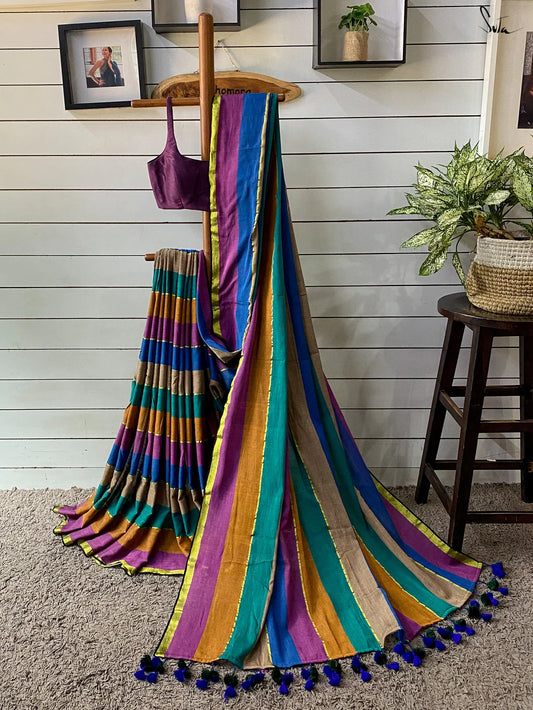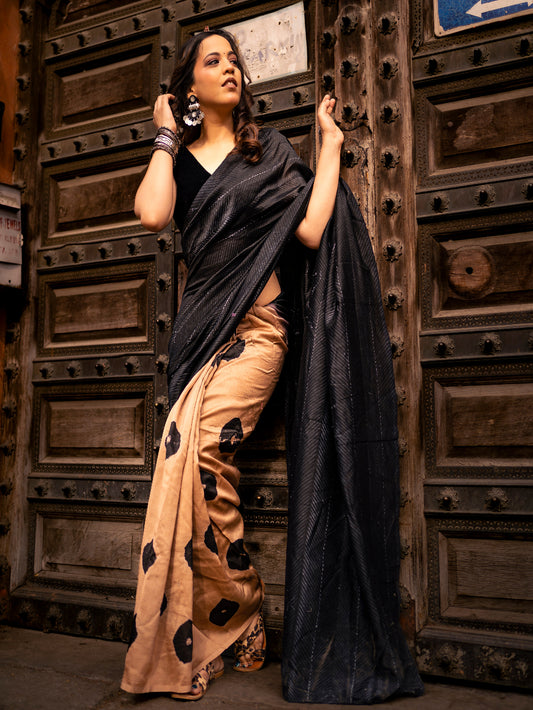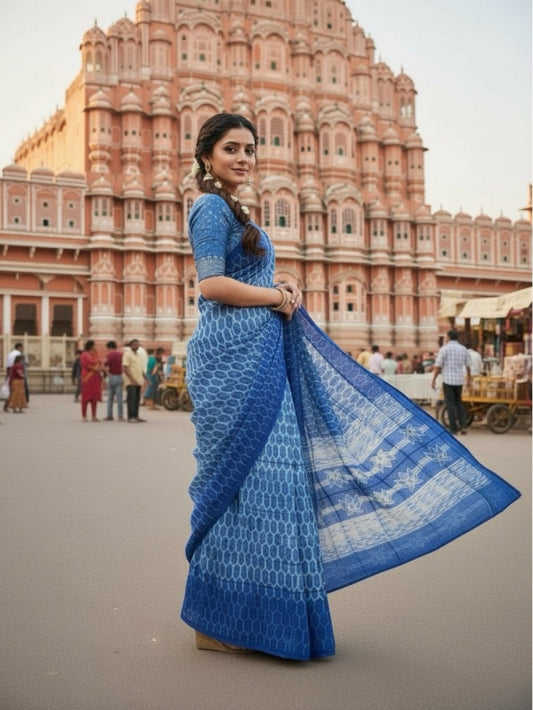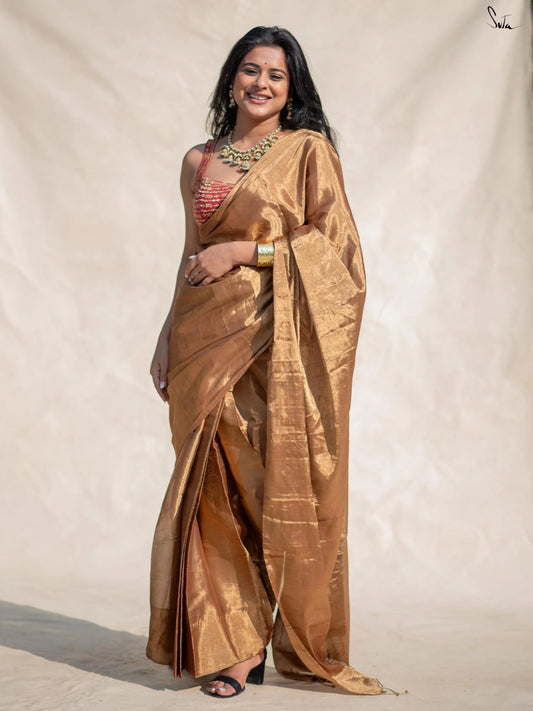One fabric, many drapes: The Sari
Share
The sari (often spelled as saree) garment is traditionally worn in the south east asian subcontinent. It’s seen on streets and runways, and has influenced fashion designers across the world for decades.
A sari is more than just ‘an uncut piece of handwoven cloth’...Customary to tradition, the sari has been defined as a single piece of unstitched fabric, often with heavier sections to allow it to drape correctly.
As with a lot of things on the Indian subcontinent, the sari has also been shaded by the impact of colonialism. During the conservative Victorian era, baring one’s chest or being blouseless was seen as improper, so the Raj promoted the wearing of blouses and petticoats with ruffled hems. The result? Even today, most people wear the sari with a blouse and petticoat.
The sari can be a purely functional garment worn everyday or an heirloom passed down through generations. Saris often evoke a feeling of nostalgia and memory, associating certain saris with particular moments or events, or with the memory of your grandmother, for example. Saris are often passed down from one generation to the next, as part of a wedding trousseau or given as gifts for milestone moments.
As well as being purely functional garments, saris are deeply connected to our memory and identity. Silk saris are associated with maximum longevity and elegance, making them the ideal heirloom passed down for generations. Check out some of our heirloom worthy picks from our limited edition release, Grace.




